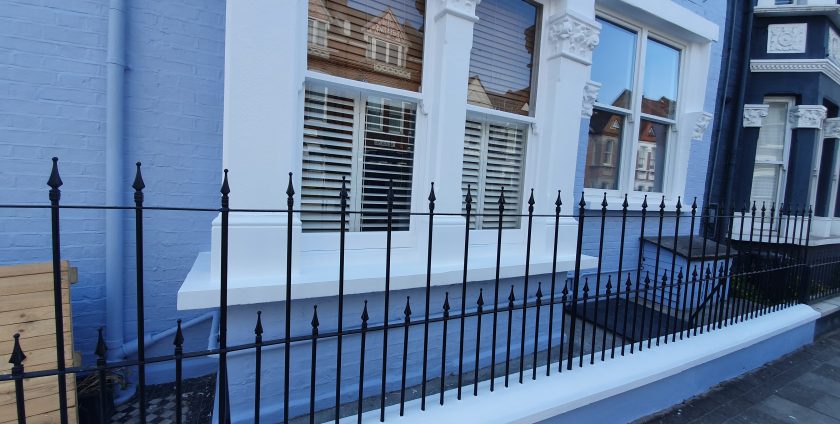
Painting the facade of the house: what is needed?
How to start?
Painting a house facade is the easiest way to refresh it. Improving the appearance of the facade is not a breakneck task as it might seem and you can do this work yourself. We advise on how to prepare the base, how to choose the paint and how to paint the facade step by step.
Preparation of the facade for painting
Different substrates require different treatment. However, they should all be compact, strong and – preferably – primed. Determining whether the condition of the substrate is good enough is simple. Just stick a piece of transparent adhesive tape on them and after a while tear it off. If the ground particles have not come off with the tape, it is strong enough. In this situation, you can proceed to priming with a preparation selected for the type of facade paint. Best recommended by its producer.
It is hard to overestimate the advantages of primers. They increase the adhesion of the substrate, while reducing its absorbability. Thanks to them, it is easier to distribute the paint and less is needed for the facade painting process. Unfortunately, the substrate does not always have sufficient strength to apply facade paint. Often, you first need to improve its parameters. If the walls of the house are covered with cracking and falling off plaster, it should be repaired or forged before painting the facade. The one that dusts or is too absorbent needs to be primed and strengthened. For this purpose, you can use a solvent preparation, obviously selected for the type of paint.
How to choose the type of paint for facade painting?
On old houses, as a rule, there are cement, cement-lime or lime plasters. The first two types of plaster can be painted with any type of facade paint. The latter are most susceptible to damage. If the substrate is to be just such plaster, it is best to paint it with silicate or lime paint. Thin-layer plasters – acrylic, mineral, silicone or silicate, which are part of the insulation system, are most often laid on new homes. As a rule, facade paint is bought together with plaster. As a simple rule: what kind of plaster, such paint, for example, if the plaster is silicone, then also silicone paint. Old houses may also have facade paint coatings. It is safest to use silicone paint then, because it can be applied to almost all facade paints, except lime paint. Do not paint silicate acrylic paints, and vice versa.
Facade painting
Painting should be carried out in conditions specified by the paint manufacturer (on a rainless day and at a suitable temperature, preferably in the range of 20-25 ° C). After checking the forecast, secure all façade elements that will not be painted, as well as the area around the building. You also need to take care of the application tools – depending on the facade structure and consistency of the paint, they will be: a roller, a brush or a spray gun. The first should be used for smoother surfaces, the second for porous and with a more pronounced structure. When choosing a spray gun, you need to match the viscosity of the spray paint (information should be included on the paint package) to the directions in the device instructions. We paint the facade next to the place, using the so-called wet to wet, covering the entire plane of the wall once. Do not paint the facade in direct sunlight, as the paint will dry on the surface very quickly, which may cause differences in the colors of the painted elements.
It is recommended to use protective grids for scaffolding or to plan painting work so that the southern facades are painted in the morning or afternoon, so that the paint coating can dry freely. With such a prepared and refreshed facade should not be a problem for the next several years.

